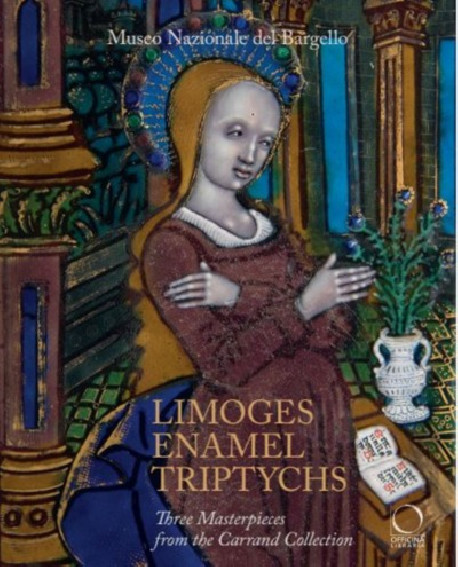Aucun produit
Produit ajouté au panier avec succès
Il y a 0 produits dans votre panier. Il y a 1 produit dans votre panier.
Afin d'optimiser votre expérience de navigation, ce site utilise des cookies. En navigant sur ce site, vous en acceptez l'usage.

Editions Bilingues & inter.
- Nouveautés
- Catalogue d'exposition
- Sélection Fêtes
- Prix réduits
- Idées Cadeaux
- Editions Bilingues & inter.
- Livres d'art pour enfants
- Histoire de l'Art
- Peinture
- Architecture
- Sculpture
- Dessin Gravure
- Photographie
- Art contemporain
- Arts Décoratifs Design
- Techniques des Arts
- Critique
- Beaux livres
- Civilisations
- Revues partenaires

Limoges Enamel Triptychs - Carrand Collection
The French city of Limoges was world famous for the production of champlevé enamels during the Middle Ages. During the Renaissance a revival of Limoges enamels took place, but the technique employed was that of painted enamel.Triptychs with a sacred subject, conceived as a painting but shining like jewelry and built with durable materials, became popular.
1 article en stock : expédié le jour-même (commande avant 14h00)
| Référence | 9788833671963 |
| Artiste-Genre | Carrand Collection, Bargello National Museum |
| Auteur(s) | Essay and catalogue entries by Paola Venturelli |
| Editeur(s) | Officina Libraria |
| Format | Ouvrage broché |
| Nb. de pages | 80 |
| Langue | English |
| Dimensions | 250 x 195 |
| Technique(s) | Illustrations : 37 colour, 6 b/n |
| Date parution | 2023 |
| Musée | Bargello National Museum, Florence |
The three works held at the Bargello National Museum in Florence are attributable to Nardon Pénicaud (1470–1542), a primary artist with an active workshop.
The three enamel paintings came from the famous collection of Louis Carrand, a Lyon antiquarian, who donated them to the Bargello in the 19th century. Their story is told in Ilaria Ciseri’s essay.
Paola Venturelli analyses the historical and artistic aspects of the works and places them in the context of contemporary enamel production. The final contributions from the Opificio delle Pietre Dure address the conservation of the three delicate enamels and analyses materials and pigments.
Produits déjà vus






